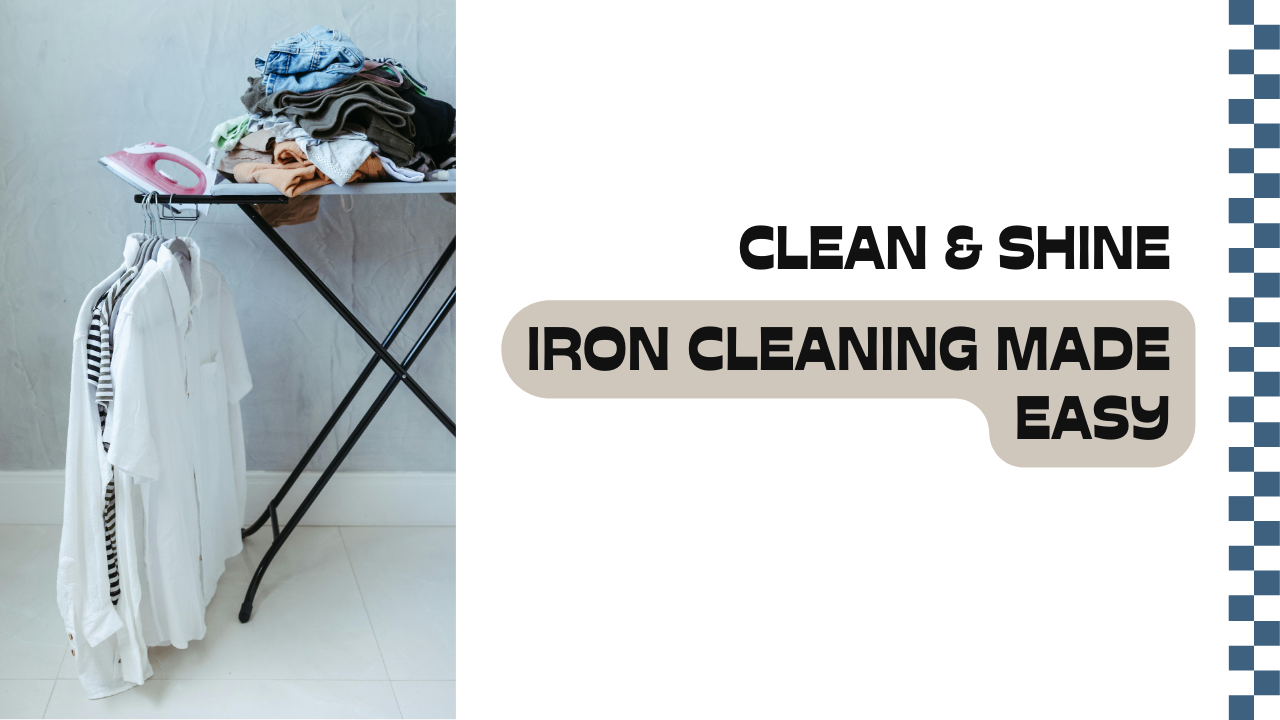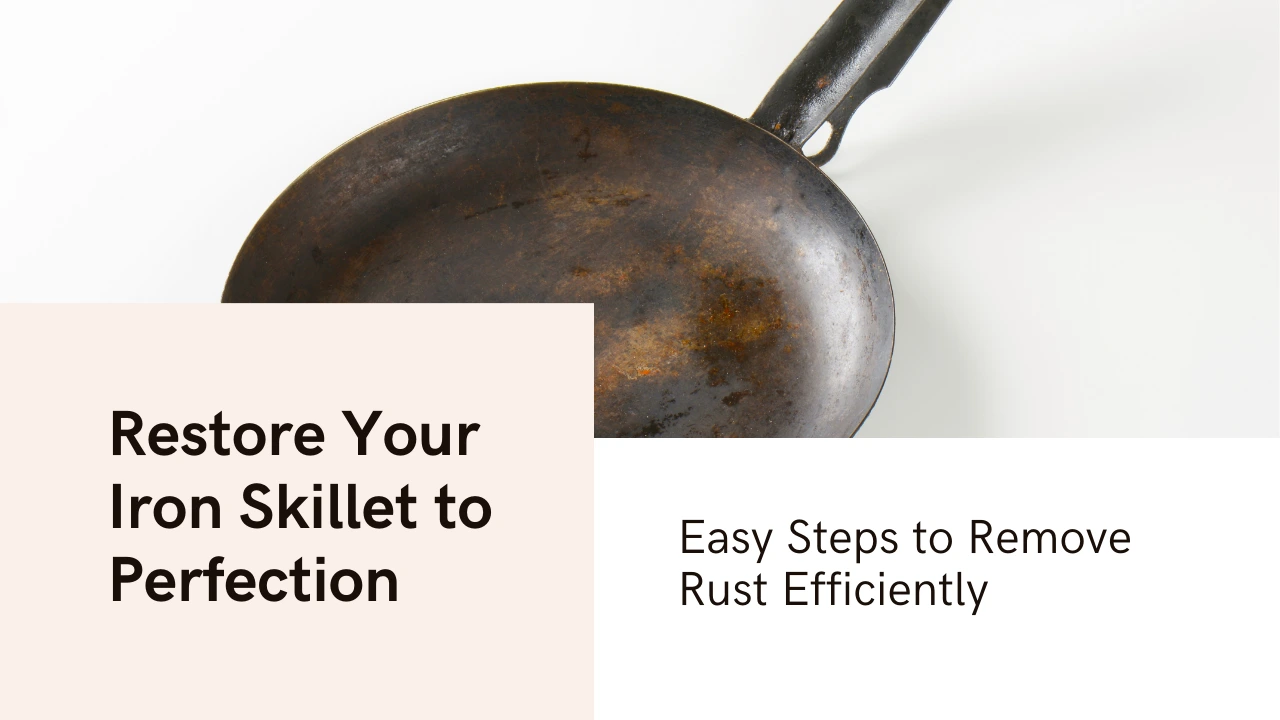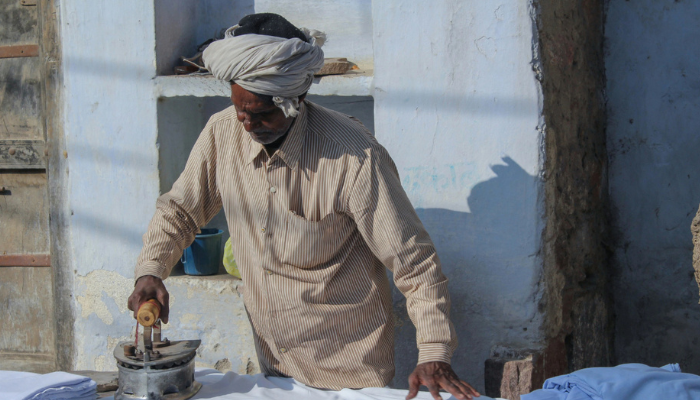Tips on how to Clean your Iron: Safety First

Hey there! Here are simple tips on how to clean an iron. If you're anything like me, you love keeping things in tip-top shape. Whether it's your trusty old cast iron skillet or that sleek iron chain necklace, giving them a good clean can make them look and perform like new. Let's dive into some super simple tips on how to clean all those iron goodies you have lying around. You'll be a cleaning pro in no time!
Let's start with the household iron. Over time, the soleplate of your iron might get sticky or rusty, and you don't want to ruin your favorite shirt with that! Here’s what you need to do:
Cleaning the Soleplate
- Unplug the Iron: Safety first! Always make sure your iron is cool and unplugged before you start cleaning.
- Mix a Cleaning Solution: Make a paste using baking soda and water. It should be thick enough to stick but not too dry.
- Apply the Paste: Gently rub the paste onto the soleplate with a soft cloth. Avoid getting it into the steam holes.
- Wipe it Clean: Use a damp cloth to remove the paste. If there’s any residue, a little vinegar can help get that shiny finish.
Cleaning the Steam Holes
- Use Cotton Swabs: Dip a cotton swab in distilled water or vinegar and clean out each steam hole.
- Steam It Out: Fill the water tank with distilled water, turn the iron on, and let it steam to clear out any remaining debris.
How to Clean an Old Cast Iron Pan
Ah, the beloved cast iron skillet. It's a kitchen staple, but it can be a bit tricky to clean if you're not used to it. Here's the lowdown:
Removing Rust
- Scrub, Scrub, Scrub: Use a scrub brush or steel wool to scrub away rust. You can use a little dish soap here, despite what you've heard!
- Rinse and Dry: Rinse with warm water and make sure to dry it completely. Moisture is rust's best friend, so keep it away!
- Season It: Rub a thin layer of oil all over and bake it upside down in the oven at 375°F for an hour. Let it cool in the oven. This will give it that nice non-stick surface.
How to Clean an Iron Skillet Rust

If rust has found its way onto your skillet, don't worry! It's not the end of the world. Follow the steps for rust removal, and your skillet will be good as new. Cast iron skillets are a beloved staple in many kitchens. They're known for their durability, heat retention, and the unique flavor they impart to food. However, they require a specific cleaning and care routine to maintain their performance. This routine is often seen as a labor of love by cooking enthusiasts.
In this guide, we'll share tips on how to clean a cast iron skillet. We'll cover everything from daily cleaning to tackling tough residue and rust. We'll also delve into the art of seasoning, a crucial process that gives cast iron its non-stick properties. Whether you're a seasoned cast iron user or a beginner, this guide will equip you with the knowledge to keep your skillet in top shape. So, let's dive into the world of cast iron care and discover how to prolong the life of your skillet.
Understanding Cast Iron Skillet Maintenance
Maintaining a cast iron skillet is key to maximizing its longevity and performance. The foundational elements are routine cleaning and proper seasoning. These practices preserve the skillet's non-stick surface and prevent rust.
Regular care not only enhances usability but can also elevate your cooking experience. With proper maintenance, your cast iron skillet can be handed down through generations. It can become a cherished piece of culinary history. Understanding these maintenance basics empowers you to make the most of your cast iron cookware.
Daily Cleaning Routine
Keeping your cast iron skillet clean ensures it remains in peak condition. Begin the cleaning process shortly after cooking while the skillet is still warm. Start by rinsing the skillet with warm water. This helps to dislodge any loose food particles. Avoid using harsh detergents that could strip the seasoning.
For more resilient bits, a stiff brush or sponge works wonders. Gently scrub the skillet, being careful not to damage its seasoning. Steer clear of metal scrubbing pads. If food persists, add coarse salt and a bit of oil. Use this mixture as a gentle abrasive to lift stubborn residue. Lastly, thoroughly rinse the skillet and remove all food and salt. Ensure it is fully clean before the next crucial step: drying.
- Rinse with warm water.
- Use a brush or sponge to scrub.
- Apply coarse salt and oil if needed.
- Rinse again and ensure it's clean.
Tackling Tough Residue and Stuck-on Food
Sometimes, stubborn residue refuses to budge. A common technique involves boiling water in the skillet. Fill it partially with water, then heat it until boiling to loosen any tough spots. After boiling, use a wooden spatula to scrape off softened food particles. Avoid sharp utensils that could damage the seasoning layer. This gentle approach helps maintain the surface.
For particularly stubborn residues, try a paste made of baking soda and water. Apply it to the problem area and let it sit for a few minutes before scrubbing gently.
- Boil water to soften residue.
- Use a wooden spatula to scrape.
- Apply coarse salt and oil if needed.
- Apply baking soda paste if needed.
Drying and Oiling: The Key to Rust Prevention
After washing your cast iron skillet, drying it thoroughly is crucial. Moisture left on the surface can lead to rust. Use a clean towel to absorb any water, ensuring every part is completely dry. Once dry, apply a light coat of cooking oil. This step helps to seal the surface and maintain the non-stick qualities. Use a cloth or paper towel to spread a thin, even layer of oil. Finally, place the oiled skillet over low heat for a few minutes. This process aids in absorbing the oil into the cast iron, reinforcing its protective layer.
The Seasoning Process Explained
Seasoning is the heart of cast iron care. It builds a natural, non-stick layer over time, enhancing your skillet's cooking performance. This layer also protects the skillet from rust. Start by cleaning your skillet to remove any food particles or residues. Once clean and dry, apply a thin layer of oil. Choose an oil with a high smoke point, like canola or flaxseed.
Next, heat the oiled skillet in an oven. Place it upside down to prevent oil from pooling, allowing for even seasoning. Set the oven to 375°F (190°C) and bake for an hour. After baking, let the skillet cool naturally in the oven. This gradual cooling helps the seasoning bond to the cast iron surface. Repeat the process several times for a richer, more durable seasoning.
Remember, seasoning is not a one-time task. Frequent use and regular seasoning improve the skillet's non-stick abilities.
Addressing Rust: Restoration Techniques
Rust can seem daunting, but restoring a cast iron skillet is simpler than you might think. Addressing rust promptly is crucial for preserving the skillet's longevity and performance. Begin by scrubbing the rusty areas with a stiff brush or steel wool. This step removes surface rust and prepares the skillet for restoration. Rinse the skillet with warm water afterward. Next, follow these restoration steps:
- Coat the skillet with a thin layer of oil.
- Heat it in the oven to stabilize the seasoning.
- Allow it to cool naturally before storing.
If rust is persistent, use a mixture of vinegar and water. Soak the skillet briefly, scrubbing again to remove remaining rust. Then, re-season to restore its non-stick surface.
When to Use Soap on Cast Iron
Many believe soap is a no-go for cast iron. However, using mild soap sparingly can be fine. Gently clean your skillet with soap only when really needed. Rinse thoroughly and dry right away to preserve the seasoning.
Special Considerations for Enameled Cast Iron
Enameled cast iron differs slightly from traditional cast iron cookware. Its enamel coating offers extra protection and easy cleaning. You can use soap without worry, but avoid metal scrubbers that might scratch the surface. Treat enameled cast iron with care to maintain its vibrant finish.
Storing Your Cast Iron Skillet Properly
Proper storage of your cast iron skillet prevents rust and preserves its quality. Ensure it's completely dry before storing. Keep your skillet in a cool, dry place to avoid moisture buildup. Stack with care or hang if possible, allowing air circulation.
Cast Iron Myths Debunked
One common myth is that soap should never touch cast iron. In reality, mild soap can be used sparingly without harming the pan. Another misconception is that cast iron is ruined if it rusts. Rust can often be removed, and the skillet can be restored.
Embracing the Cast Iron Lifestyle
Caring for a cast iron skillet can enrich your cooking experience. It's about more than just maintenance—it's about creating flavorful meals and lasting memories. With the right techniques, your skillet can last generations. Embrace this journey and enjoy the unique character your skillet gains over time.
How to Clean an Old Cast Iron Pot
Got an old pot that needs some love? The process is pretty similar to the skillet. Here’s a quick rundown:
- Scrub Off the Rust: Use a stiff brush or steel wool to remove any rust spots.
- Wash and Dry: Rinse it with water and dry it thoroughly.
- Re-Season: Just like with your skillet, apply a thin layer of oil and bake it to restore its protective layer.
How to Clean an Iron Chain
Iron chains can be a pain if they get rusty or grimy. Here's a simple way to clean them up:
- Soak in Vinegar: Place the chain in a bowl of vinegar and let it soak for a few hours to loosen any rust.
- Scrub-a-dub-dub: Use a toothbrush or small brush to scrub away any remaining rust or grime.
- Rinse and Dry: Rinse the chain with water and dry it completely to avoid further rusting.
Cleaning an Iron Neck Chain

Iron neck chains can also be cleaned using the vinegar method. Just remember to dry them thoroughly to keep them looking shiny and new.
How to Clean the Bottom of an Iron
Sometimes the bottom of your iron needs some extra attention. If the baking soda paste isn’t cutting it, try this:
- Use Vinegar and Salt: Make a paste with vinegar and salt, and apply it to the soleplate. Be gentle!
- Heat It Up: Turn on the iron to a low setting and let it sit for a few minutes. Then, wipe it clean with a damp cloth.
Clean Iron Plate
For all the DIYers out there, keeping your iron plate clean is key to a smooth, snag-free ironing experience. Keep the baking soda and vinegar tips handy, and you’ll always be ready to tackle any gunk that comes your way.
Quick Recap
- Safety First: Always unplug and cool down your iron before cleaning.
- Baking Soda and Vinegar: Your best friends for cleaning most iron items.
- Dry Thoroughly: To prevent rust, always dry your iron tools and accessories completely.
So there you have these tips on how to clean your iron with the intention of safety first! With these easy tips, you can keep your iron items in great shape without breaking a sweat. Whether it’s your trusty iron, a skillet, or a delicate chain, a little TLC goes a long way. Happy cleaning!
Want to read more? Check out our latest post about how to remove bad smells from your microwave.
